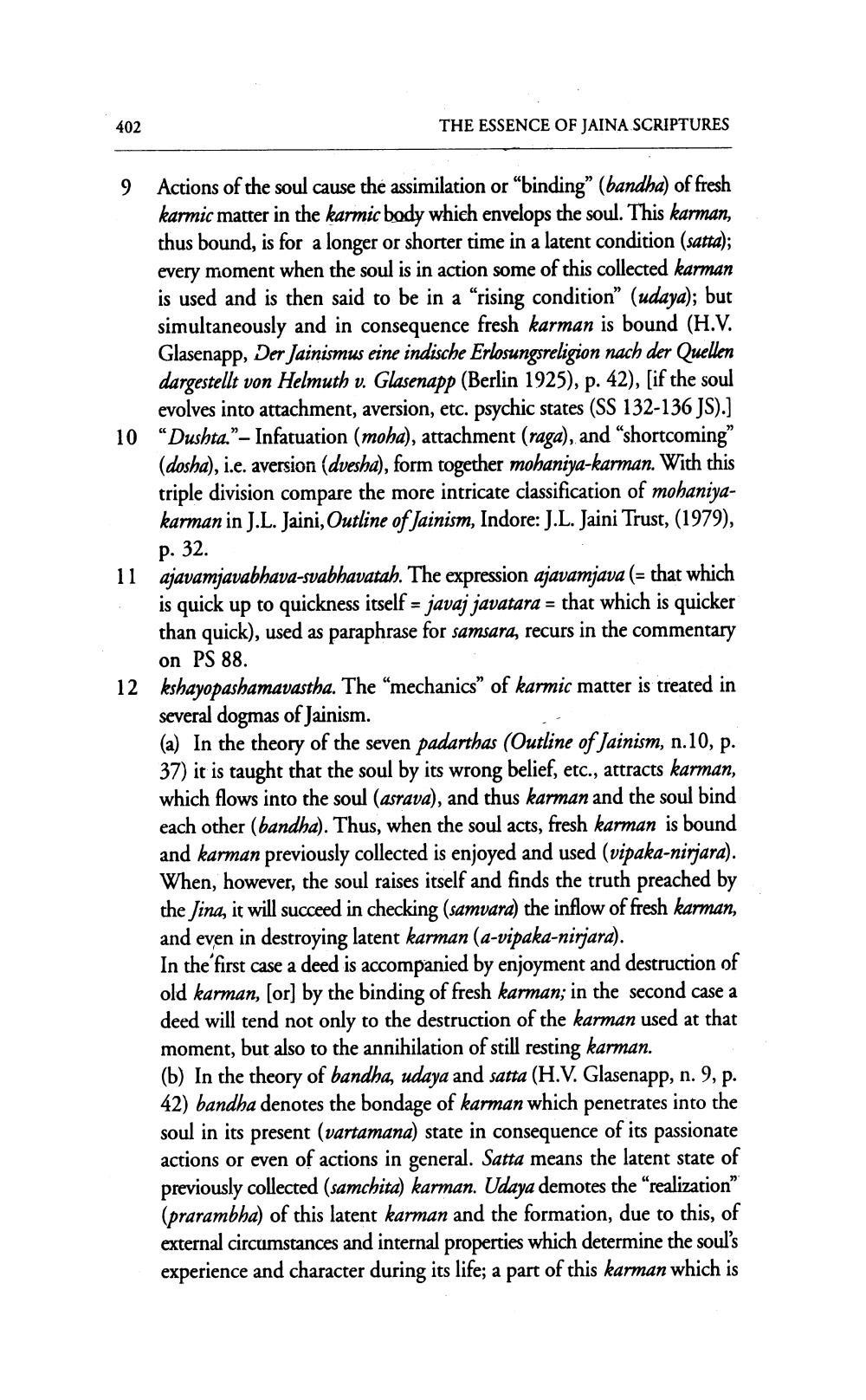________________
402
THE ESSENCE OF JAINA SCRIPTURES
9
10
11
.
12
Actions of the soul cause the assimilation or “binding” (bandha) of fresh karmic matter in the karmic body which envelops the soul. This karman, thus bound, is for a longer or shorter time in a latent condition (satta); every moment when the soul is in action some of this collected karman is used and is then said to be in a “rising condition” (udaya); but simultaneously and in consequence fresh karman is bound (H.V. Glasenapp, Der Jainismus eine indische Erlosungsreligion nach der Quellen dargestellt von Helmuth v. Glasenapp (Berlin 1925), p. 42), (if the soul evolves into attachment, aversion, etc. psychic states (SS 132-136 JS).] “Dushta."- Infatuation (moha), attachment (raga), and “shortcoming" (dosha), i.e. aversion (dvesha), form together mohaniya-karman. With this triple division compare the more intricate classification of mohaniyakarman in J.L. Jaini, Outline of Jainism, Indore: J.L. Jaini Trust, (1979), p. 32. ajavamjavabhava-svabhavatah. The expression ajavamjava (= that which is quick up to quickness itself = javaj javatara = that which is quicker than quick), used as paraphrase for samsara, recurs in the commentary on PS 88. kshayopashamavastha. The “mechanics” of karmic matter is treated in several dogmas of Jainism. (a) In the theory of the seven padarthas (Outline of Jainism, n.10, p. 37) it is taught that the soul by its wrong belief, etc., attracts karman, which flows into the soul (asrava), and thus karman and the soul bind each other (bandha). Thus, when the soul acts, fresh karman is bound and karman previously collected is enjoyed and used (vipaka-nirjara). When, however, the soul raises itself and finds the truth preached by the Jina, it will succeed in checking (samvara) the inflow of fresh karman, and even in destroying latent karman (a-vipaka-nirjara). In the first case a deed is accompanied by enjoyment and destruction of old karman, (or) by the binding of fresh karman; in the second case a deed will tend not only to the destruction of the karman used at that moment, but also to the annihilation of still resting karman. (b) In the theory of bandha, udaya and satta (H.V. Glasenapp, n. 9, p. 42) bandha denotes the bondage of karman which penetrates into the soul in its present (vartamana) state in consequence of its passionate actions or even of actions in general. Satta means the latent state of previously collected (samchita) karman. Udaya demotes the “realization” (prarambha) of this latent karman and the formation, due to this, of external circumstances and internal properties which determine the souls experience and character during its life; a part of this karman which is




